Poodles can have blue eyes, but this is not what the breed is known for. Blue eyes are usually a sign that something is wrong with the dog and not a stylish mutation.
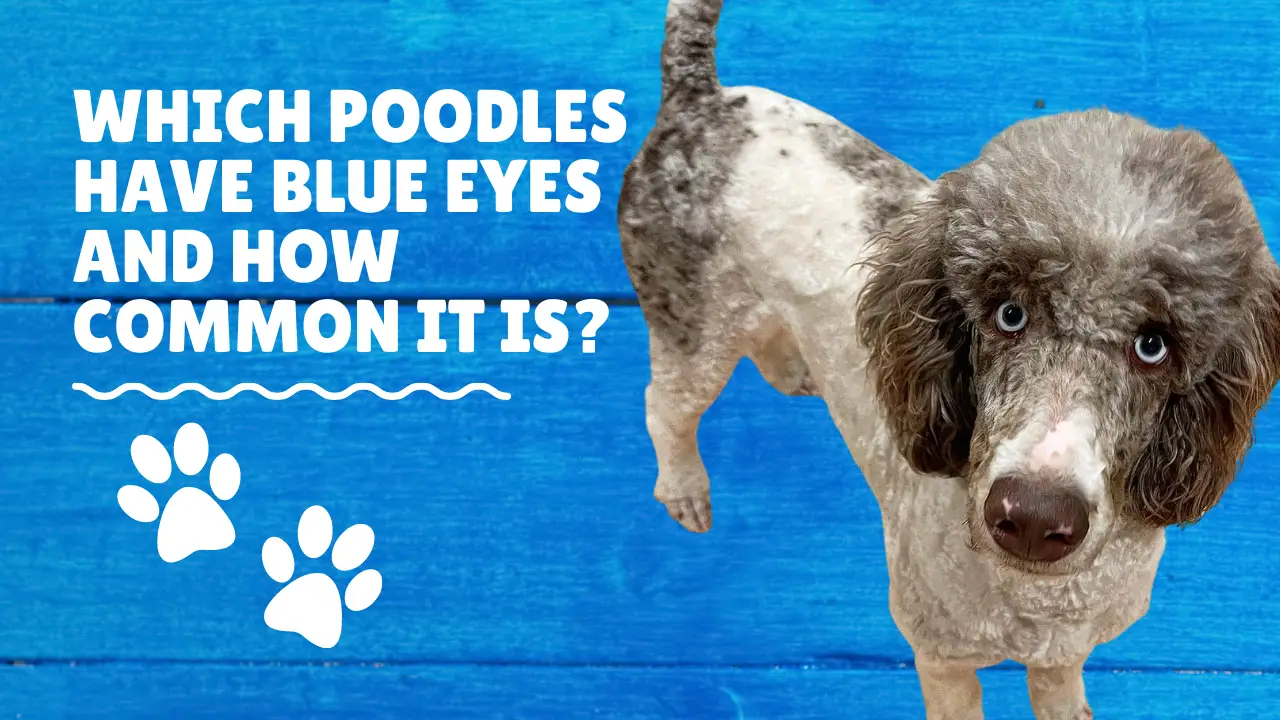
What Will You Learn? 👇
Can a poodle get blue eyes?
You might have seen many Poodle’s in your life, but ones with blue eyes may not have jumped straight to your mind. It’s most likely you’ve witnessed Poodles that have brown or black eyes, but some Poodles do have blue eyes.
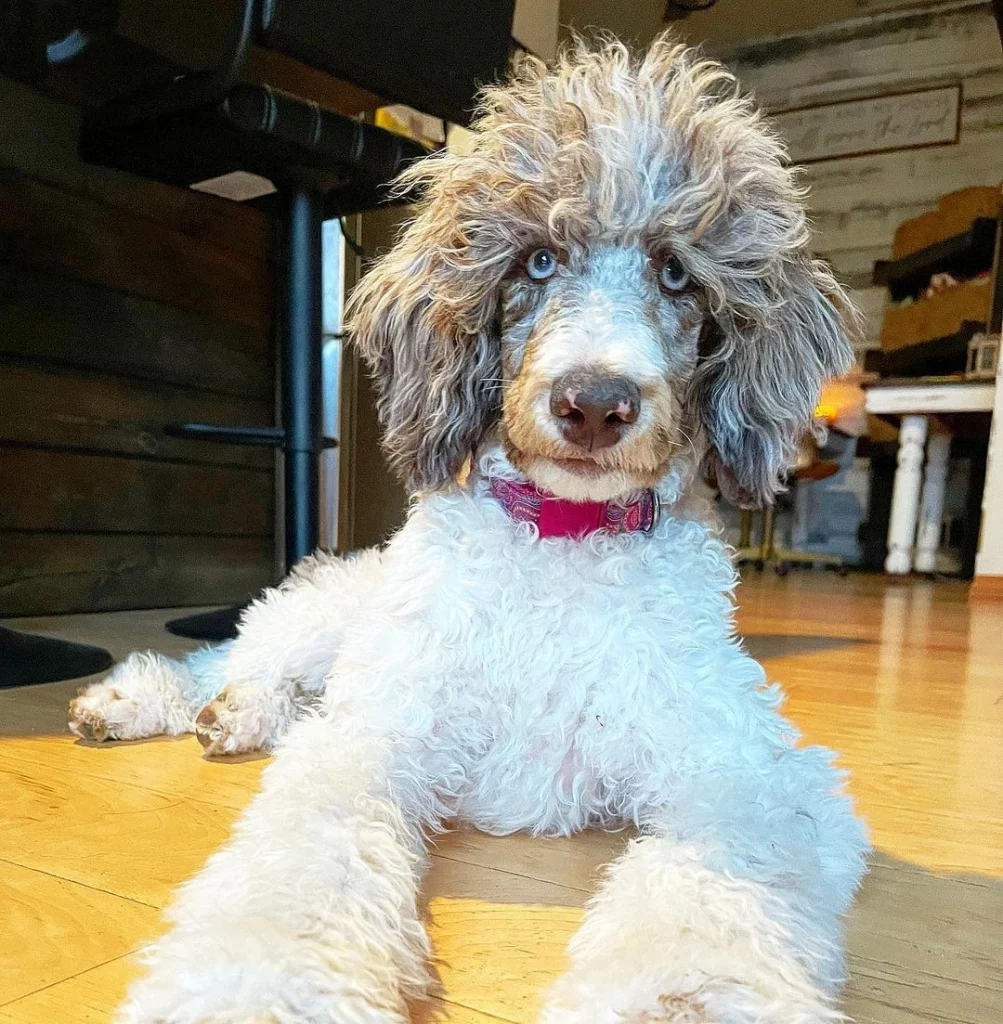
However, it’s not entirely common, and it’s pretty rare for a Poodle to have this. The American Kennel Club and the United Kennel Club register their main eye color as dark brown. Moreover, usually, their eyes are not fully blue! Their pupil will remain black, and their iris will be a blue color.

Read our Smart Poodles - Smart Tricks eBook for only $2.99
Dive into a treasure trove of engaging tricks and tips designed specifically for your poodle!
Plus, regarding their blue eyes, there’s a lot of controversy surrounding them. Many scientists believe their eye color derives from Poodles that are crossbred, and it’s not a natural one occurring in a purebred Poodle. Similarly, it’s thought that the color of the Poodle’s coat can influence the color of their iris, but this does not necessarily apply to the blue part.
However, there’s a lot more scientific research yet to be done to support this. In addition to this, it’s believed that a Poodle might end up with blue eyes as a result of underlying health issues which are potentially serious.
How does a poodle get blue eyes & what are the causes
When it comes to the Poodle, there are many cool characteristics attributed to it, but most of these characteristics come if the Poodle has been bred properly. Nowadays, you can’t always predict where you’re buying from unless you visit a breeder or a shelter first in person.
There are so many backyard breeders and puppy mills in today’s world that many Poodles are born with genetic problems. Plus, breeders who try to crossbreed Poodles and don’t come from a straight lineage may trigger some confusion on what characteristics might be.
Hence why it’s important to visit breeders in person and see what the Poodle’s parents are like. You must learn as much as possible to know about the dog’s health and their bloodline spanning over four generations. Simply by knowing their bloodline, you will have a good idea of what diseases they might have that could contribute to the Poodle’s blue eyes.
Generally, Poodle’s will have blue eyes due to a Merle Gene, Heterochromia, white irises eye disease, and Albinism.
The Merle Gene
Merle is known as a genetic pattern found in a Poodle’s coat. This gene is specifically responsible for producing swirly, spotted, and splotchy patterns on their coat. Generally, the most common merle colors for a Poodle are black or gray with a base coat or a white/grey speckled pattern.
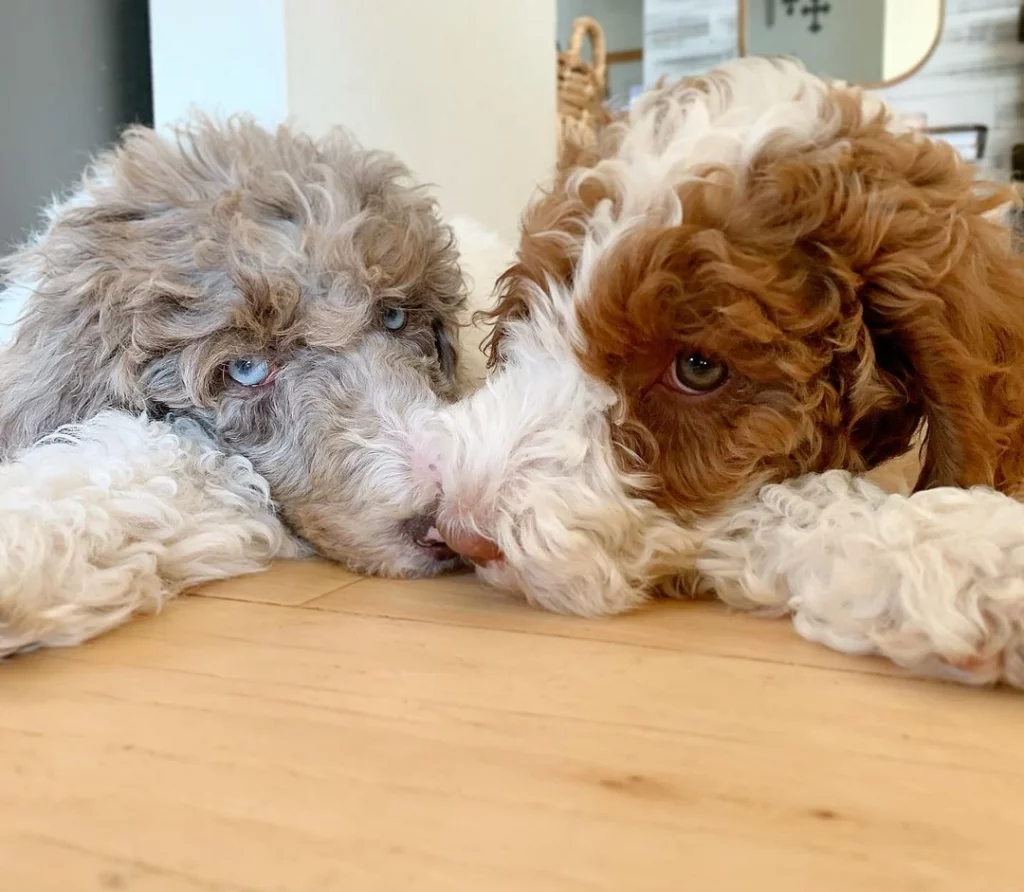
Sometimes they do have a blue-colored coat known as blue merle and also a light red coat called red merle. It also gives Poodles a greyish/blue ting to their eyes.
It is generally accepted that Merles do not naturally occur in the pedigree Poodle population, so many suspect that the occurrence of Merles is due to matings with other breeds.
This could potentially be a game changer for those of you looking to get a purebred Poodle. This is especially the case if you wish to enter your Poodle in a show or anything else. However, if you want a Poodle just to be a family pet, then it may not be too much of an issue.
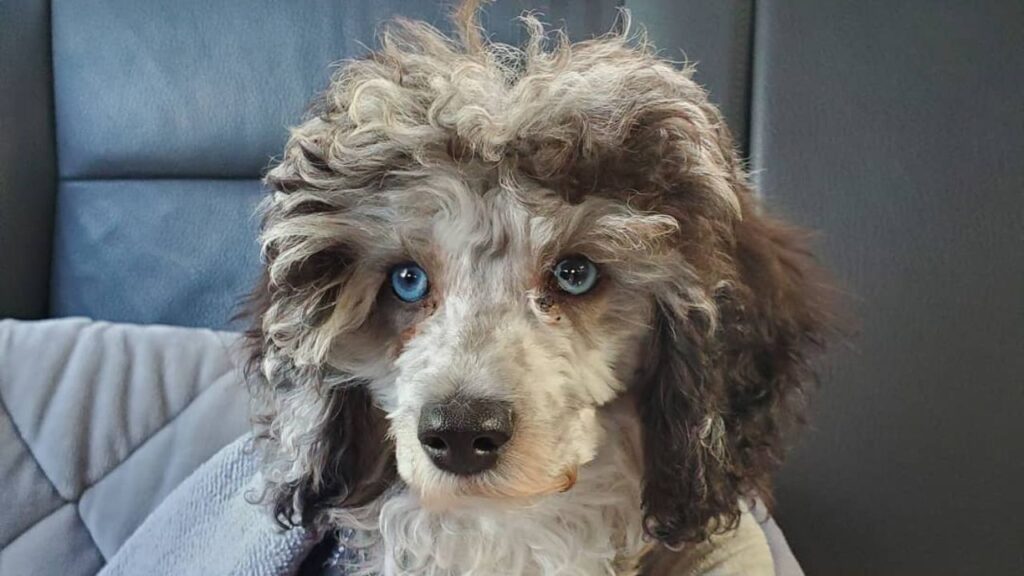
But, if you choose to have this type of Poodle, you must be familiar with the downsides of the Merle Gene. First of all, puppies that have this gene can be born deaf and/or blind. Plus, if they have two parents with the merle gene, they won’t be allowed to breed with another dog breed with the Merle gene. Furthermore, both Poodle parents who carry the merle gene run a high risk of having offspring with no eyes and other deformities.
Heterochromia
This is a rare recessive condition, a Poodle, common in humans, horses, cats, and dogs. It’s an uncommon condition that can result as a by-product of the merle gene or other genes causing blue eyes; it can be inherited or occur independently. Generally, Poodles with heterochromia only have blue eyes and not some underlying conditions. This condition can only be diagnosed by a vet.
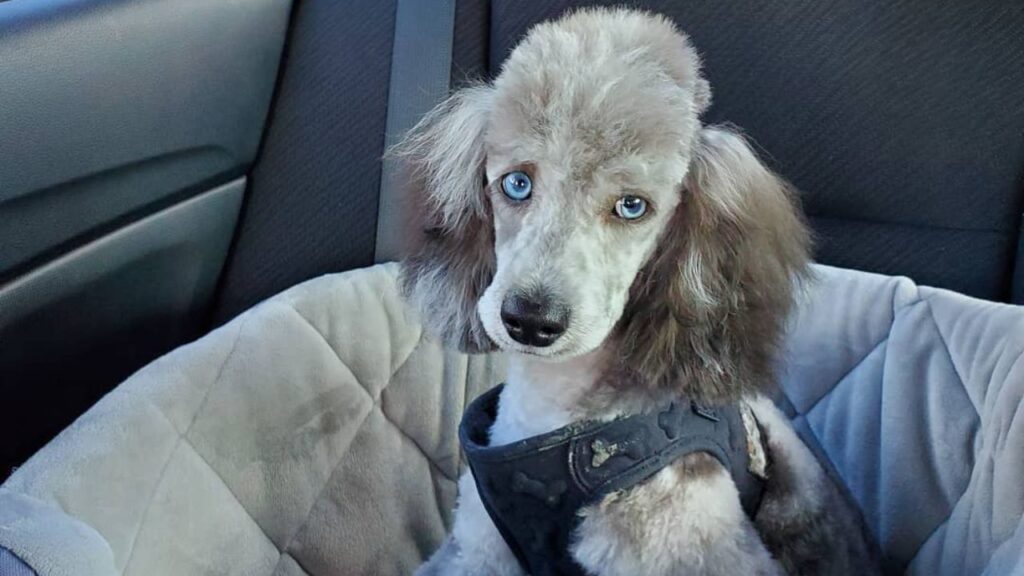
If diagnosed, a vet might discover an underlying illness, inflammation, or even a brain tumor. Even though there can be other symptoms of brain tumors, heterochromia can often be the first sign of one. Other problems that might trigger heterochromia are cataracts, glaucoma, nuclear sclerosis, and an underdeveloped optic nerve. Once a vet has diagnosed this condition, they often treat a Poodle by providing the following:
- Doggie goggles: These are a set of goggles that protect their eyes from the sun, dust, injuries, and additional foreign objects.
- Eye wipes: Medicinal and nonmedicinal eye wipes are used to clean their eyes and stop infections or eye conditions from getting worse.
- Supplements: Vets often prescribe supplements to better their eyesight and stop their eyes from deteriorating.
Eye Disease (white irises)
Sometimes a Poodle’s eyes can develop pigmentations as it gets older as a result of eye disease. One disease, in particular, this happens in is cataracts, where milky white changes occur to a Poodles lens, causing a white iris and different colors around it. It is also common if a Poodle gets glaucoma.
Albinism
There is also a chance a Poodle might have a very rare genetic mutation known as tyrosinase (albino). This mutation causes little pigmentation of melanin in their whole body, affecting their skin, hair, eyes, and blood vessels. A Poodle can only get this condition if both parents have the gene. The most common signs of this disease are a Poodle having blue eyes, a pink nose, white spots on their head and gest. Generally, though, there are very few albino dogs that exist.
What color eyes do poodles have?
Poodles can have many different types of eye colors, which are:
- Dark brown: This is the standard color for this breed and the most dominant color. Sometimes the brown color can look so dark people mistake them for black. It’s believed that Poodle’s with dark brown eyes have more melanin in their bodies which produces a dark pigment called eumelanin.
- Amber and brown: Sometimes, a Poodle might have brown eyes with red pigments like an amber color. This happens when they have less eumelanin in their bodies—most of the time when poodles have an amber colored coat.
- Red and brown: If a Poodle has another variation of melanin known as pheomelanin, they might have a red or yellow pigment in their eyes and fur.
Can a Doodle have blue eyes?
While I’ve mentioned the Poodle, you might be curious when it comes to Doodles. The truth is, Doodles can have blue eyes if breeders intentionally mix their lineage. In fact, there are some Doodle breeds where blue eyes are expected. Such common Doodle breeds to have blue eyes are the Cockapoo, Maltipoo, Schnoodle, and more.

Conclusion
Overall, Poodle’s can have a variety of eye colors from dark brown, red, amber-brown, and grayish-blue. Usually, if they have the latter, it’s a sign of an underlying health condition that needs to be addressed. Some of these health conditions can be inherited, or they can just occur. The common conditions that trigger this eye color are the Merle Gene, Albinism, Heterochromia, and other eye diseases.
It’s important to know that blue eyes are not the breed Standard for a Poodle, and they may not be accepted in shows. Therefore if you’re planning on getting a Poodle, always see the breeder and know Poodle’s parent’s history before buying.
What do you think of blue eyes on a Poodle? Let us know in the comments down below.
Marko is the founder and author at PoodleHQ, where he blends profound expertise with formal training in Animal Behavior and Canine Genetics. With multiple generations of poodles under his care, he’s a breed connoisseur, honored with the Canine Care Excellence Award and lauded by the International Pet Enthusiasts Association.


Very Interesting, Blue eyes in Poodles!!
Love the blue eyes as long as not related to health problem.
These are my poodles!! The one with blue eyes is Sloane, and the red parti liver nose is Ohana! I breed AKC poodles. I’m on IG, Drei B. Ranch
😘